#Museum of Civilization
Photo

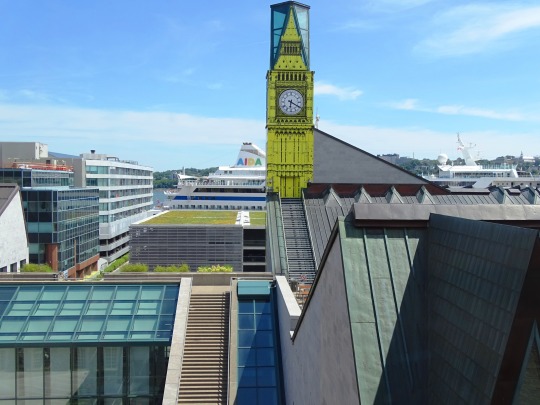


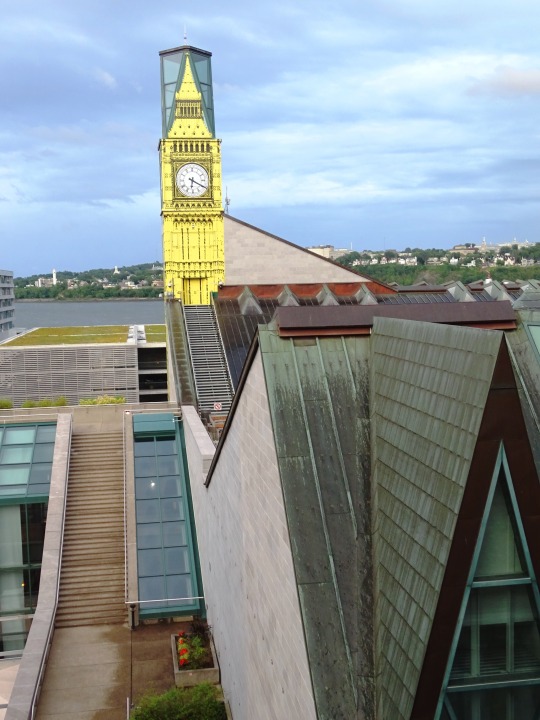




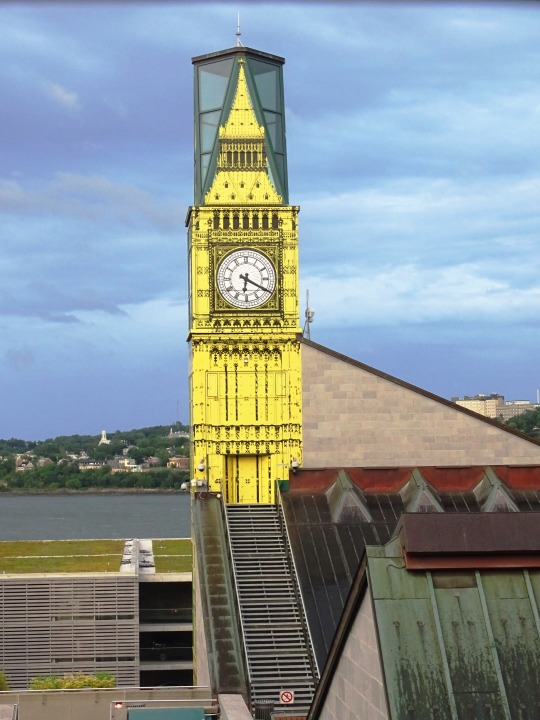
The Elizabeth Tower at the Houses of Parliament, which houses Big Ben, started keeping time on May 31, 1859.
#Museum of Civilization#Elizabeth Tower#Houses of Parliament#clock#started#31 May 1859#anniversary#British history#Quebec City#Québec#Canada#London Is Calling#exhibition#Musée de la civilisation#travel#85 rue Dalhousie#AIDAvita#Maasdam#rainbos#roofs#architecture#cityscape#summer 2018#tourist attraction#landmark#St. Lawrence River#original photography
1 note
·
View note
Text
Quebec Vacation Travel Guide | Expedia
Quebec – Looking for the best things to do in the city? Click play on our travel guide to get an insider’s peek at this Canadian …
source

View On WordPress
#attractions#Battlefields Park#best travel destinations in the world#Citadelle of Quebec#cvg#expedia#explore#guide#Montmorency Falls#Museum of Civilization#Old Quebec Funicular#Parliament Building#Place Royale#Quartier Petit Champlain#tourism#tourist#travel#trip#vacation#visit#yt:cc=on
0 notes
Text
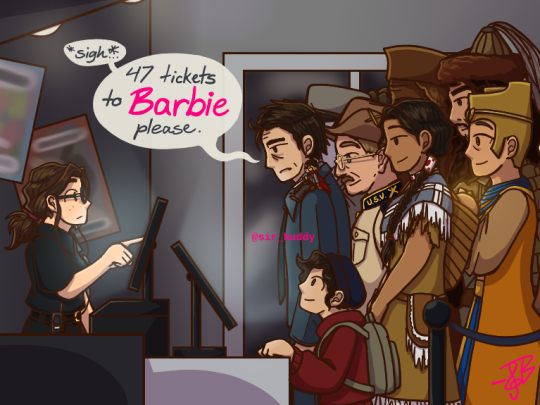
Sometimes I think I'm funny.
#are you guys excited for Barbie?#art#my art#night at the museum#natm#movie theater#barbie#barbie movie#larry daley#jedediah smith#gaius octavius#nick daley#teddy roosevelt#sacagawea#atilla the hun#christopher columbus#cavemen#civil wars guys#the minis all share two seats
2K notes
·
View notes
Text
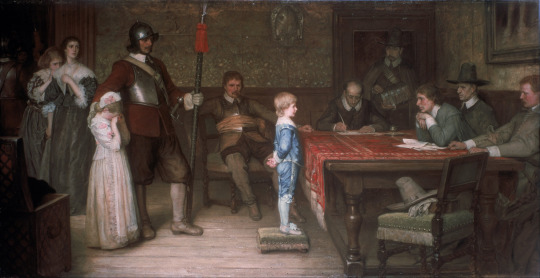
William Frederick Yeames (1835-1918)
"And When Did You Last See Your Father?" (1878)
Oil on canvas
Located in the Walker Art Gallery, Liverpool, England
The oil-on-canvas painting, depicts a scene in an imaginary Royalist household during the English Civil War. The Parliamentarians have taken over the house and question the son about his Royalist father (the man lounging on a chair in the centre of the scene is identifiable as a Roundhead officer by his military attire and his orange sash).
Yeames was inspired to paint the picture to show the crises that could arise from the natural frankness of young children. Here, if the boy tells the truth he will endanger his father, but if he lies he will go against the ideal of honesty undoubtedly instilled in him by his parents.
The boy in the picture is based on Thomas Gainsborough's painting The Blue Boy. It was modelled by Yeames's nephew, James Lambe Yeames. Behind the boy, there is a girl, probably the daughter, waiting her turn to be questioned. The girl was based on Yeames's niece, Mary Yeames. At the back of the hall at left the mother and elder daughter wait anxiously on the boy's reply.
The scene is neutral: while the innocence of the boy is emphasized by his blond hair, open expression and blue suit, the questioners are also treated sympathetically; the main interrogator has a friendly expression, and the sergeant with the little girl has his arm on her shoulder as if comforting her.
#paintings#art#artwork#history painting#english civil war#william frederick yeames#oil on canvas#fine art#walker art gallery#museum#art gallery#english artist#british artist#history#costume#costumes#interior#art analysis#child#children#snitches get stitches#1870s#late 1800s#late 19th century#a queue work of art
173 notes
·
View notes
Text
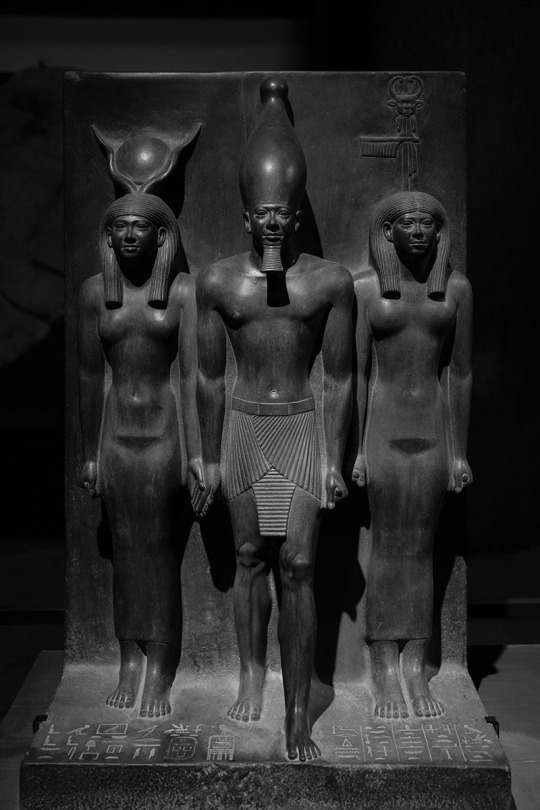
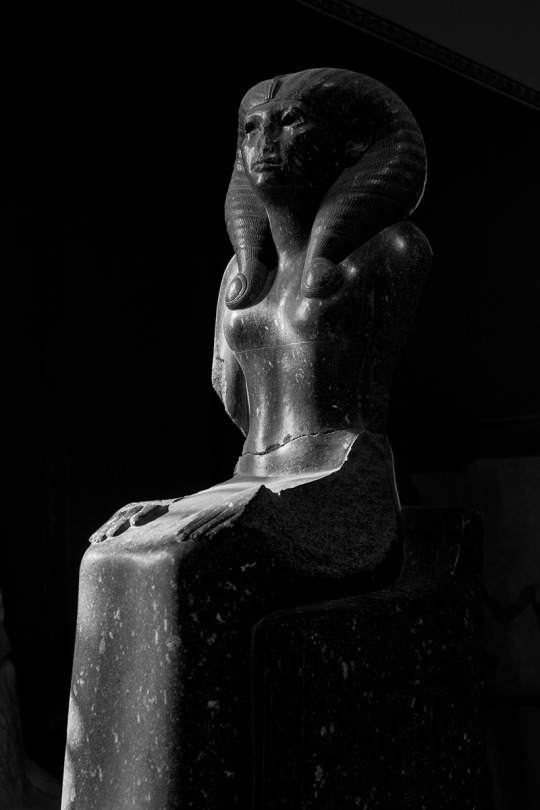

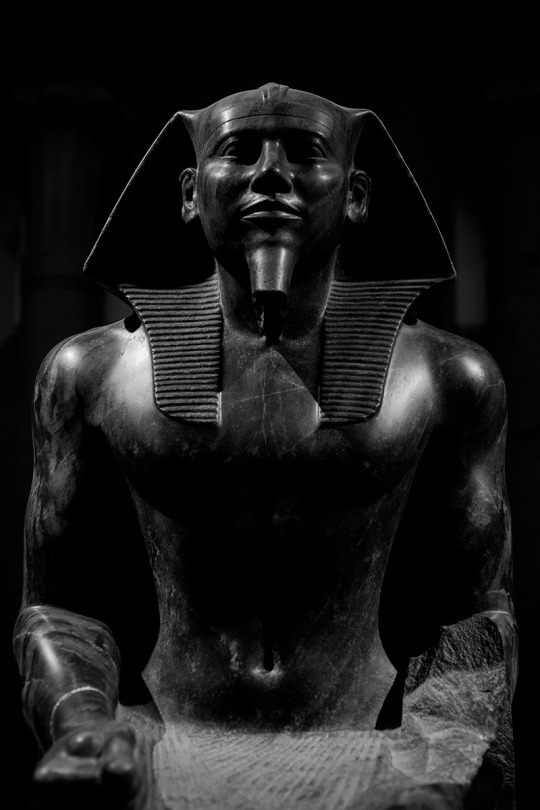
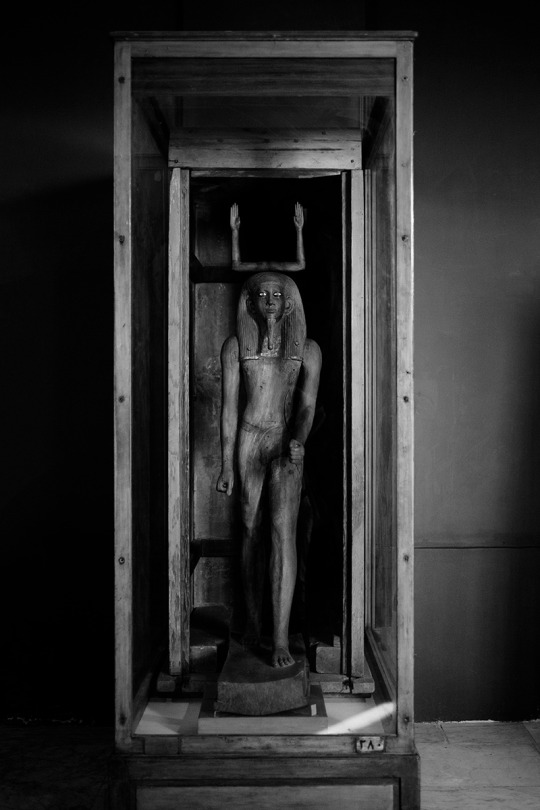
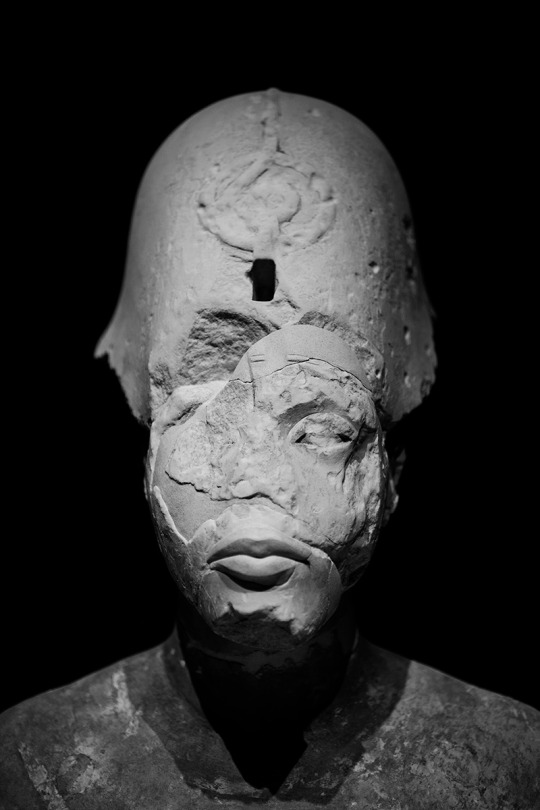
“They Have Already Landed”
(Cairo diary, 2022)
#cairo museum#ancient egypt#black and white#egyptian sculpture#ancient aliens#diary#sculpture photography#ancient civilizations#akhenaten#ka
577 notes
·
View notes
Text
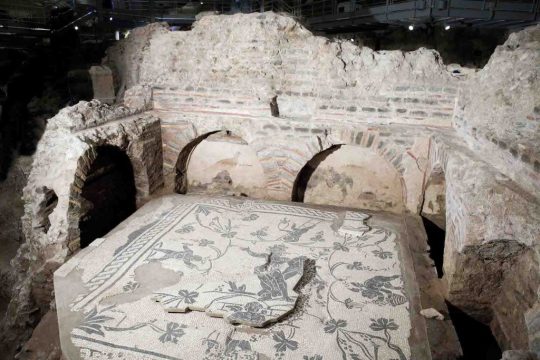
Vatican Museums Opens Ancient Roman Necropolis to the Public
The site was previously only accessible to scholars and specialists.
The Vatican Museums has newly opened to the public an ancient necropolis stocked with carved marble sarcophagi and bone-filled open graves of everyday ancient Romans.
The word necropolis comes from the Greek expression for “city of the dead.” These “cities” grew up alongside roads outside the urban center due to laws forbidding cremation and burial of the dead inside city limits. Funerary practices and rites are preserved especially clearly in the necropolis that extends along the Via Triumphalis (a Roman road now known as the Via Trionfale), with burial sites accompanied by eye-popping Roman frescoes and mosaics.
Previously, the necropolis was accessible only to certain groups of scholars and specialists. It is now open to the public via the new Saint Rose Gate entrance, inaugurated with the exhibition “Life and Death in the Rome of the Caesars.”
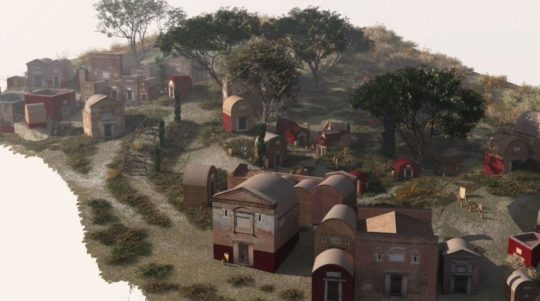
How extensive is the archaeological area?
It extends nearly 11,000 square feet. The size of the necropolis is not as extensive as some other Roman burial sites, but its importance lies in its proximity to one of the most significant religious sites in Christianity.
What is known about particular people who are buried there?
According to archaeologists, no less than the tomb of St. Peter himself is located in the Vatican Necropolis.
But in general, “Here, we have represented the lower middle class of Rome’s population,” said Leonardo Di Blasi, an archaeologist with the Vatican Museums, in a video on Euro News. “They are essentially slaves, freedmen, artisans of the city of Rome.” Some were the property of the emperor, and are indicated to have been the “servant of Nero.”
One of them was a man named Alcimus, who was the set director for the downtown Theater of Pompeii, the most important theater of the period. Another was a horse trainer who worked at the chariot races.
One young boy is interred there, according to the Catholic News Service, marked by a sculpture of a boy’s head accompanied by an inscription reading “Vixit Anni IIII Menses IIII Dies X,” Latin for “He lived four years, four months, and 10 days.”
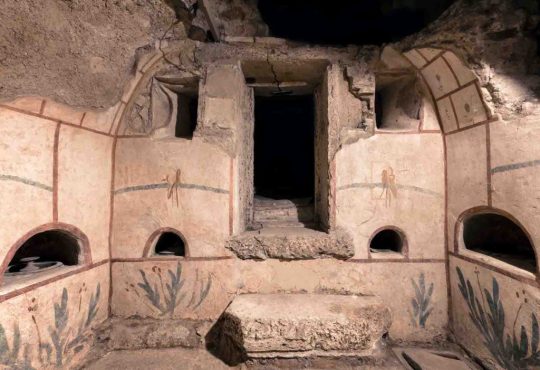
How did this ancient burial ground come to light?
The Vatican burial grounds were first explored in the 1940s at the request of then Pope Pius X, who wanted to be buried near the grave of Peter the Apostle. The dig revealed numerous mausoleums and tombs.
The newest part of the burial ground was revealed through an infrastructure project in 2003, as the Vatican excavated for a new multilevel employee parking garage.
What happened when the Vatican discovered these newest burial grounds?
The department of the Vatican that was overseeing construction of the parking garage, intent on meeting its deadline, was accused of trying to conceal the find, Giandomenico Spinola, an archaeologist and deputy artistic-scientific director of the museums, told the Catholic News Service. It was only when journalists publicized the discovery that he and his colleagues were invited in to advise.
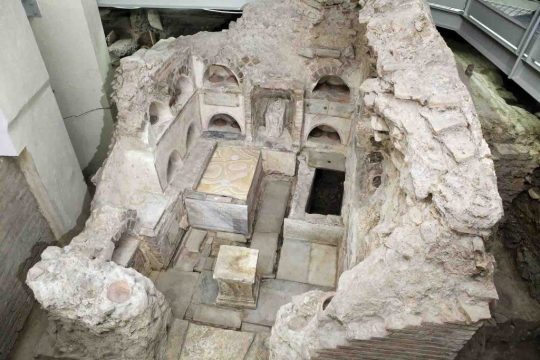

When were the bodies there buried? How have the tombs been so well preserved?
Bodies were interred in this burial ground between the first century B.C.E and the fourth century C.E., and organic remains have vanished. A number of the graves, including their tombs and decorations, including frescoes, mosaic floors, and marble-carved inscriptions, were fortuitously preserved by a series of mudslides in the area.
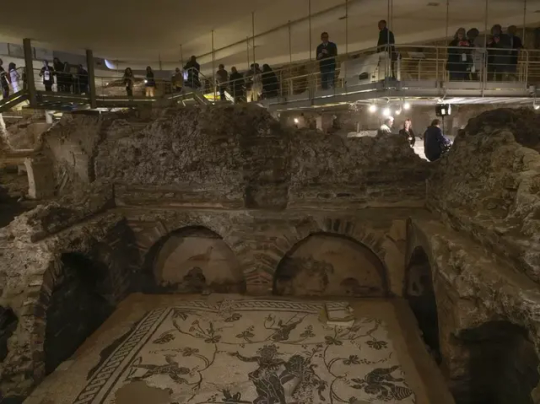
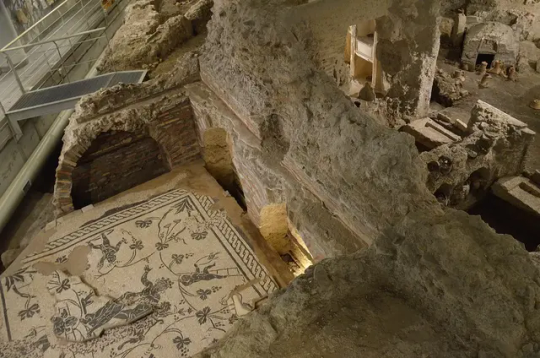
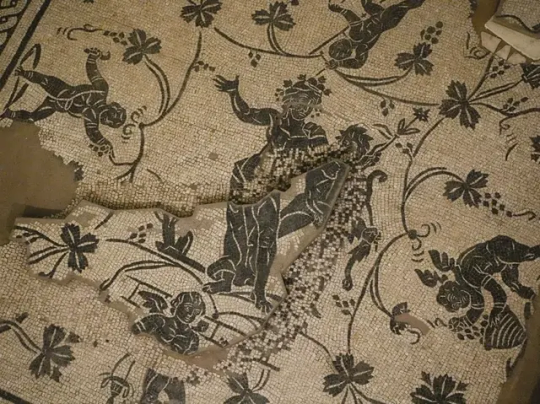
#Vatican Museums Opens Ancient Roman Necropolis to the Public#The Vatican Museums#Ancient Roman 'City for the Dead'#Via Triumphalis necropolis#Life and Death in the Rome of the Caesars#ancient graves#ancient tombs#ancient necropolis#ancient artifacts#archeology#archeolgst#history#history news#ancient history#ancient culture#ancient civilizations#ancient rome#roman history#roman empire#roman art
264 notes
·
View notes
Text


felt bad so I drew them more to feel less bad
564 notes
·
View notes
Text
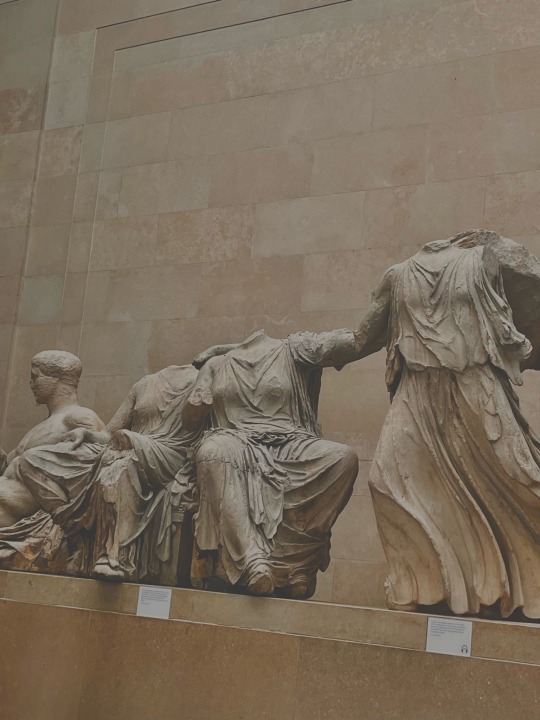
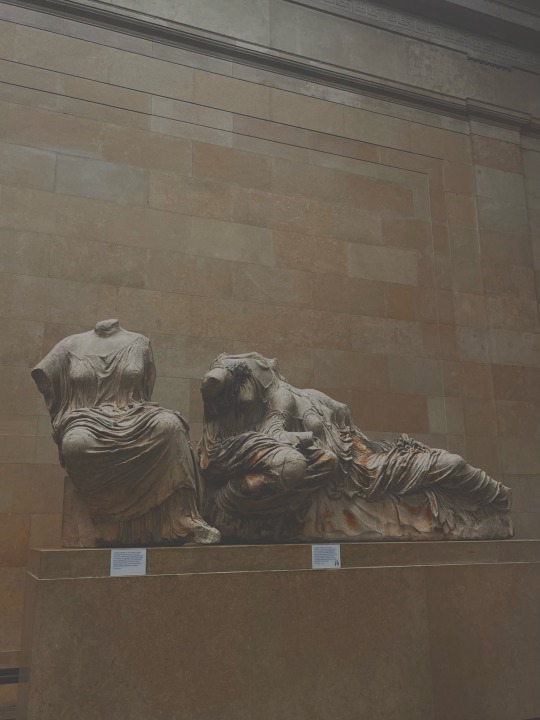
‘its sculptor well those passions read/ Which yet survive, stamped on these lifeless things’
- ozymandias, percy bysshe shelley
#my photos#the british museum#dark academia#poetry#percy bysshe shelley#writing#ancient civilizations#sculpture#ancient greece#museums#art#beauty#light academia#trying to channel my inner ancient because this world is just too much#dark acadamia aesthetic
402 notes
·
View notes
Text
Shogan Announces Plans for Permanent Emancipation Proclamation Display 📜

On Saturday, June 17, 2023, Archivist of the United States Dr. Colleen Shogan was honored to announce that the National Archives intends to place the Emancipation Proclamation on permanent display inside the Rotunda, joining our nation's foundational documents alongside the Declaration of Independence, the Constitution, and the Bill of Rights.
Dr. Shogan made the special announcement on Saturday just before General Orders No. 3 and the Emancipation Proclamation went on public display through June 19.
The National Archives will begin an assessment to determine the best display environment, considering the condition and importance of the original document.
The current plan for display calls for showing one side of the Emancipation Proclamation, a double-sided five-page document, alongside facsimiles of the reverse pages. The original pages on display will be rotated on a regular basis to limit light exposure.
Watch the full announcement on our Instagram page: https://www.instagram.com/p/CtmMzyjAUmR/?hl=en
Learn about the Emancipation Proclamation and General Order No. 3:
https://museum.archives.gov/featured-document-display-emancipation-proclamation-and-juneteenth
157 notes
·
View notes
Text
pro tip though: asking tour interpreters at a historical museum about ghosts is, 9 times out of 10, a fantastic way to get them to dislike you
#I was once on a tour of a Civil War house museum and we were seeing where the house was used as a makeshift field hospital and you can still#see bloodstains on the floor—grisly stuff#And another guest asked the guide if there were any ghosts#And she went OFF at him#Kinda unprofessional ngl but I got it#My dad and I kinda locked eyes remembering the time at Kilmainham Gaol in Dublin#When my dad asked the guide about ghosts and the guide gave him a stern lecture about how#this place is about history and remembering the people who were held here and the political repression of Irish nationalists#Not sensationalist ghost tales#I have yet to meet a museum interpreter who likes this question#Museums
43 notes
·
View notes
Text
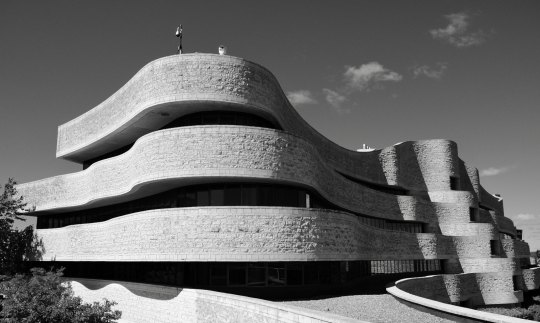
Douglas Joseph Cardinal
Canada Museum of Civilization, 1989
Photo: Joanne Clifford
#architecture#douglas joseph cardinal#douglas cardinal#organic architecture#contemporary architecture#architectural design#canada museum of civilization
32 notes
·
View notes
Photo

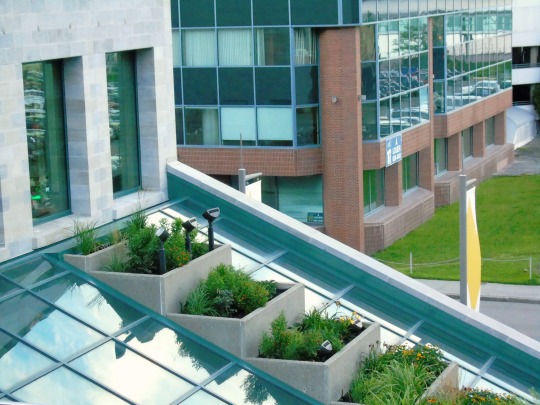
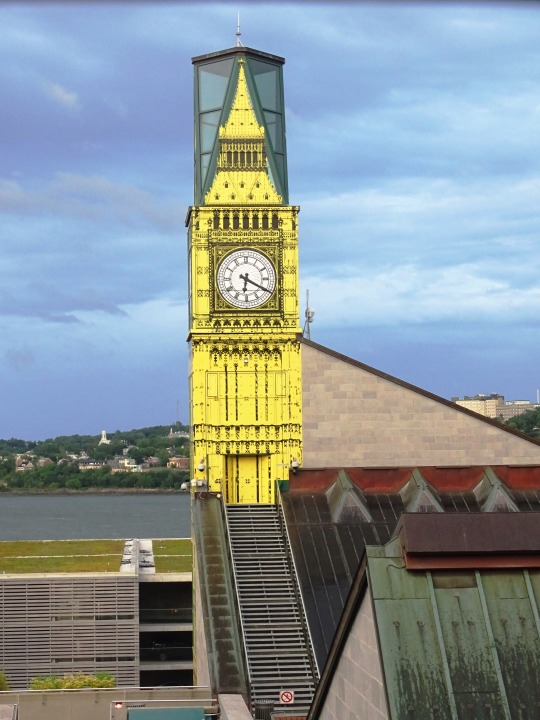




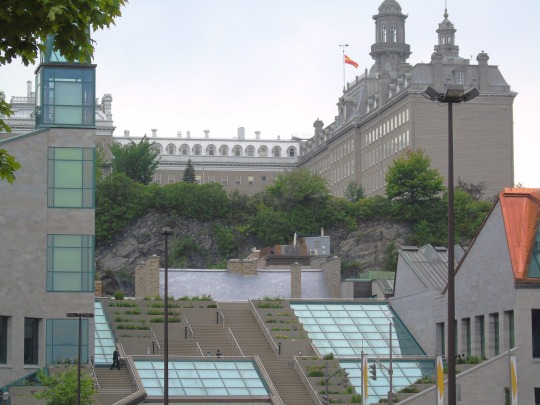
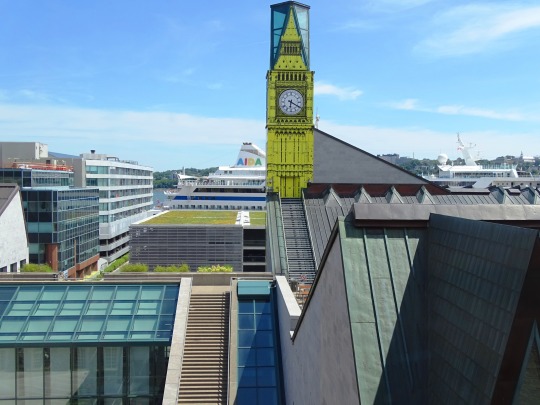

The Musée de la civilisation à Québec (Museum of Civilization) opened its doors to the public on 19 October 1988.
#Musée de la civilisation à Québec#Museum of Civilization#opened#Canada#anniversary#Canadian history#original photography#travel#summer 2018#2015#architecture#cityscape#exterior#public art#Babel Tower at the Top of the Ladders by Yves Gendreau#rainbow#sky#tourist attraction#85 rue Dalhousie#Moshe Safdie#La tête ailleurs by Fannie Giguère#London Is Calling#exhibition#roof#19 October 1988
0 notes
Text
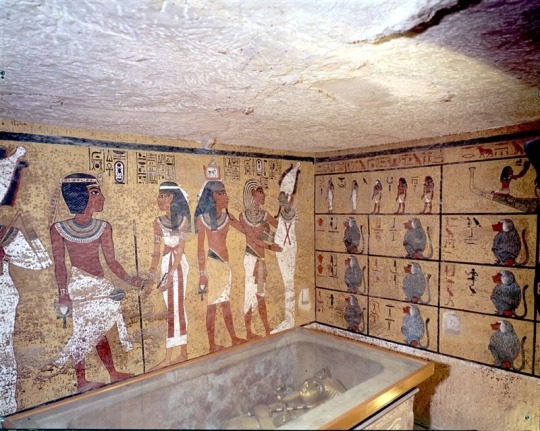

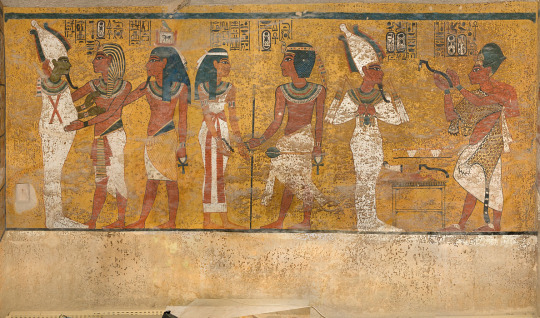

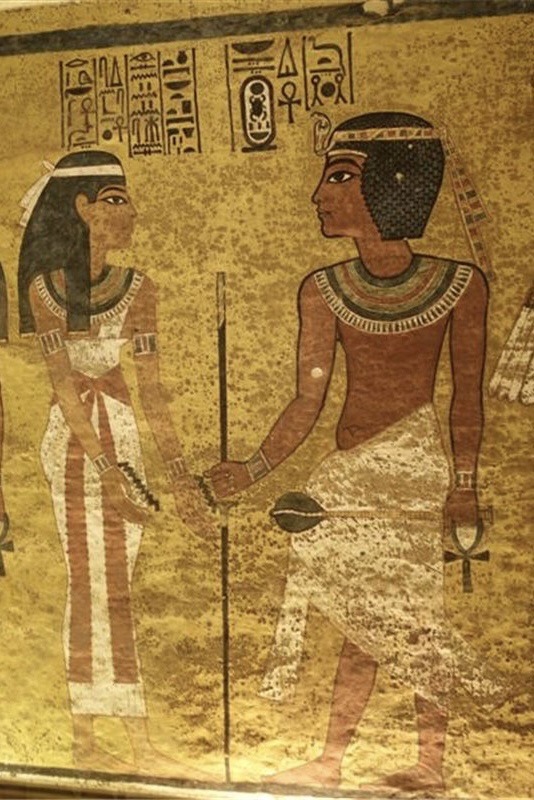

Details of the paintings on the north wall of Tutankhamun's tomb. The scenes must be interpreted from right to left, thus the first represents the ceremony of the Opening of the mouth, an ancient funerary ritual that consisted of touching different parts of the mummy's body with an adze to restore the senses it had in life and so we can have them in the afterlife. Ay, vizier and successor of Tutankhamun wears the blue crown or war headdress “jepresh”, the leopard skin of the sem priests (funerary priest) and is preparing to carry out the ceremony on the mummy of the king who is represented as if was the god of the underworld Osiris.
In the second image, the goddess Nut, divinity of the night sky, is seen welcoming Tutankhamun who is holding a staff, a mace and the ankh (life) symbol.
The third and final scene, Tutankhamun, held by his ka, the "life force" (for the Egyptians a component of the human spirit), embraces the god Osiris, lord of the Underworld and Judge of the Dead.
86 notes
·
View notes
Text
Rep. Alexandria Ocasio-Cortez said Thursday in Chile that it was imperative for the United States to declassify documents that could shed light on Washington’s involvement in the South American country’s 1973 coup.
“The transparency of the United States could present an opportunity for a new phase in our relationship between the United States and Chile,” Ocasio-Cortez said in Spanish in a video posted on Instagram alongside Camila Vallejo, the spokesperson for the left-leaning government of President Gabriel Boric.
The Democratic congresswoman from New York is part of a delegation of lawmakers who traveled to the capital of Santiago ahead of the 50th anniversary of the coup against President Salvador Allende on Sept. 11, 1973.
The delegation had first traveled to Brazil and will now go to Colombia, both of which are also ruled by left-leaning governments.
The goal of the trip was to “start to change … the relationships between the United States and Chile and the region, Latin America as a whole,” Ocasio-Cortez said outside the Museum of Memory and Human Rights that remembers the victims of the dictatorship of Augusto Pinochet, who ruled from 1973 to 1990.
“It’s very important to frame the history of what happened here in Chile with Pinochet’s dictatorship. And also to acknowledge and reflect on the role of the United States in those events,” Ocasio-Cortez said.
Ocasio-Cortez said she has introduced legislation to declassify documents related to Chile’s coup and Vallejo said a similar request had been made by the Chilean government.
“In Chile as well, a similar request was made … that aims to declassify documents from the Nixon administration, particularly certain testimonies from the CIA director. This is to attain a clearer understanding of what transpired and how the United States was involved in the planning of the civil and military coup, and the subsequent years that followed,” Vallejo said. “This is very important for our history.”
U.S. Rep. Greg Casar, a Democrat from Texas, said after the delegation’s approximately hourlong visit to the museum in Santiago that it was important to recognize the “truth” that “the United States was involved with the dictatorship and the coup.”
“So that’s why we’re here,” Casar said in Spanish to journalists, “to acknowledge the truth, to begin a new future.”
U.S. Rep. Joaquin Castro from Texas said the visit to the museum was a reminder that it was important “to make sure that a tragedy and a horror like this never, ever happens again in Chile or in Latin America or anywhere else around the world.”
Earlier in the day, the delegation also met with Santiago Mayor Irací Hassler.
Reps. Nydia Velázquez of New York and Maxwell Frost of Florida also traveled to South America as part of the delegation sponsored by the Center for Economic and Policy Research, a Washington-based think tank.
#us politics#news#nbc news#us house of representatives#2023#Rep. Alexandria Ocasio-Cortez#Chile#declassify documents#South America#Camila Vallejo#President Gabriel Boric#President Salvador Allende#Latin America#Museum of Memory and Human Rights#Augusto Pinochet#Nixon administration#cia#civil and military coup#Rep. Greg Casar#Rep. Joaquin Castro#Mayor Irací Hassler#Rep. Nydia Velázquez#rep. Maxwell Frost#Center for Economic and Policy Research#world politics#south american politics
93 notes
·
View notes
Photo

Mamuka Japharidze. St. Sebastian. Performance, Tbilisi History Museum, Georgia, 1992
In December 1992, 10th Floor and Marjanishvilebi member Mamuka Japharidze (born 1962) performed at the Tbilisi History Museum as St. Sebastian. Covered in white chalk and tied with rope to a pillar, the artist presented himself to the public as a sculpture of the Roman saint. Although St. Sebastian is considered the patron saint of homosexuality, Mamuka used the religious figure to reference the chaos of the Georgian civil war. In religious iconography, St. Sebastian is depicted pierced by the arrows of a Roman legionnaire, rendering the viewer—who is in the position of an archer—the unconscious executioner.6 By inviting the audience to look at both him and each other, Japharidze addressed the interaction between victim and abuser. After a thirty-minute performance in a semi-derelict space on a freezing cold day, the artist walked to the old Roman Sulphur Baths to wash himself clean. With references to the torturous nature of war, he also played with words and their meaning: in Georgian, romelia translates as “who is” and “Roman.”
https://post.moma.org/an-underground-bridge-to-georgian-collectiveness-finding-a-tribe-through-collective-trauma/
#mamuka japharidze#tbilisi history museum#st. sebastian#performance#performance art#trauma#georgian civil war#georgia
201 notes
·
View notes
Text
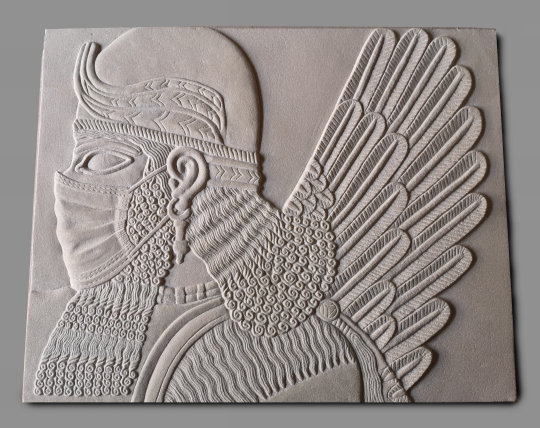
Masked Assyrian Winged Genie.
Hand carved in sandstone, now in possession of the British Museum.
Can be viewed here: https://www.britishmuseum.org/collection/object/W_2020-6011-1
#carving#stone carving#sculpture#art#traditional art#ancient history#ancient art#archaeology#antiquities#ancient civilizations#assyria#neo assyrian#ancient assyria#mesopotamia#mesopotamian art#mesopotamian#british museum#museum#the british museum#hand crafted
49 notes
·
View notes